I am using jQuery functionalities of eq() but it is not providing correct results
<html>
<head>
<script src="https://ajax.googleapis.com/ajax/libs/jquery/1.11.3/jquery.min.js"></script>
<script>
$(document).ready(function(){
$("button").click(function(){
$("div p:eq(1)").css("border","2px solid red");
});
});
</script>
</head>
<body>
<button>Click Me!</button>
<p>This is a paragraph.</p>
<p>This is a paragraph.</p>
<p>This is a paragraph.</p>
<div>
<p>This is a paragraph.</p>
<p>This is a paragraph.</p>
<p>This is a paragraph.</p>
</div>
<div>
<p>This is a paragraph.</p>
<p>This is a paragraph.</p>
<p>This is a paragraph.</p>
</div>
</body>
</html>
Expectation:
I expected 2 lines to be in red (5th and 8th).
Result:
Also, when I am using lt(), I am getting wrong results.
HTML:
<html>
<head>
<script src="https://ajax.googleapis.com/ajax/libs/jquery/1.11.3/jquery.min.js"></script>
<script>
$(document).ready(function(){
$("button").click(function(){
$("div p:lt(2)").css("border","2px solid red");
});
});
</script>
</head>
<body>
<button>Click Me!</button>
<p>This is a paragraph.</p>
<p>This is a paragraph.</p>
<p>This is a paragraph.</p>
<p>This is a paragraph.</p>
<p>This is a paragraph.</p>
<div>
<p>This is a paragraph.</p>
<p>This is a paragraph.</p>
<p>This is a paragraph.</p>
<p>This is a paragraph.</p>
<p>This is a paragraph.</p>
</div>
<div>
<p>This is a paragraph.</p>
<p>This is a paragraph.</p>
<p>This is a paragraph.</p>
<p>This is a paragraph.</p>
<p>This is a paragraph.</p>
</div>
</body>
</html>
Expectation:
I expected 4 lines to be in red (6th, 7th, 11th and 12th).
Result:
I know that alternatively I can use, nth-child() , or nth-of-type(), nth-last(), or nth-last-child(), or :odd(), or :even(); or :nextAll() or :prevAll(), but I want to know, why is this not working! ;( .
Can someone help me out where is the problem?

